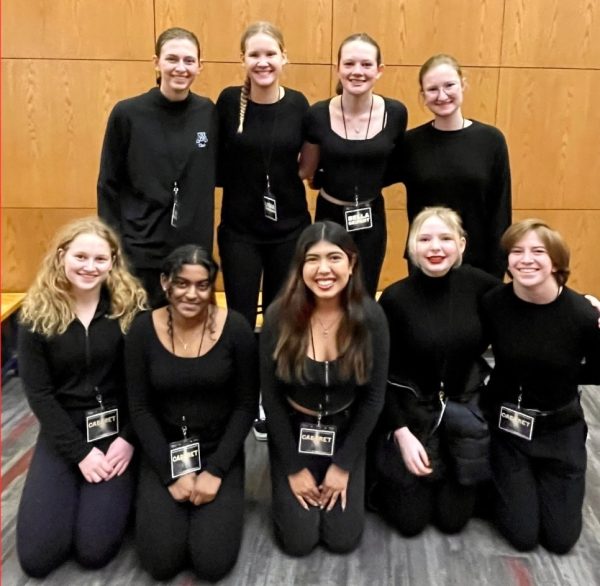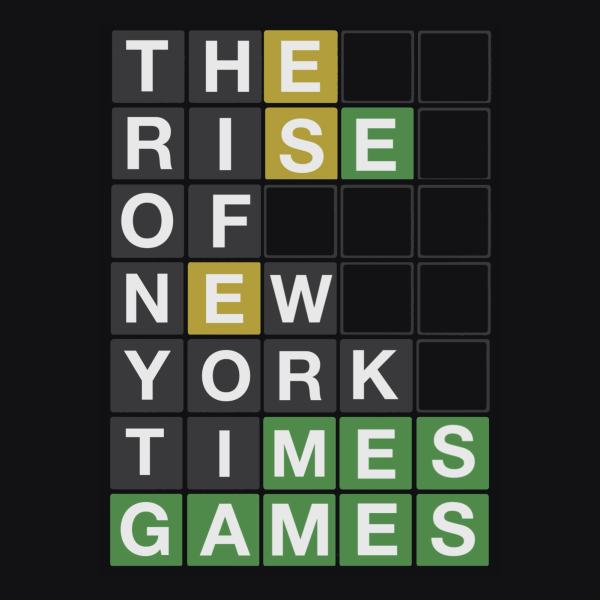Student Walkout for Equity
May 21, 2021
On Monday, Apr. 19, students across Minnesota participated in a state-wide school walkout in reaction to recent anti-Asian hate crimes and the shooting of Daunte Wright. Minnetonka students also joined the movement on this day, addressing both national and local issues.
The MHS walkout was organized by leaders of Asian Student Union (ASU) and the Women and Men of Color Clubs to hold Minnetonka’s school administration accountable for racial injustice within the district. Students of all grades walked out of their classes at 1 p.m., exited through the west entrance doors and gathered around the Rock and surrounding area, which was painted with the Black Lives Matter fist logo and slogans of solidarity.
The crowd listened to BIPOC student speakers as they shared their experience with the discrimination they have faced while attending school in Minnetonka. There were moments of silence for Daunte Wright, Soon Chung Park, Hyun Jung Grant, Suncha Kim, Xiaojie Tan and Daoyou Feng, all of whom were murdered in recent hate crimes.
“The walkout was actually different from other walkouts,” said Bryn Huynh, ‘21, one of the organizers of the event.
Huynh explained that student leaders wanted it to resemble a rally to allow for student speakers.
“We chose to do it this way because we really wanted to highlight student voices,” she said.
Huynh and You-Gyung Won, ‘21, read a speech at the walkout, explaining how “just because someone is kind or respectful to others, does not mean that they cannot be racist.”
Minnetonka’s slogan is “Do the Right Thing,” and the administration preaches kindness and respectfulness, yet BIPOC students at Minnetonka still feel the impact of discrimination and microaggressions.
Following the walkout, ASU demanded that the School District address the issues at hand. This petition asked for specific and clear statements condemning anti-Black and -Asian hate, as well as an acknowledgment of systemic racism in the United States. They also asked that the administration stop directing affected BIPOC students to a nearly all-white counseling staff and for the administration to stop using the work of student-led groups as evidence of the District’s progress. Instead, ASU demanded the establishment of effective safe spaces and events with BIPOC adults, as well as direct action on the administration’s part.
“The work doesn’t stop here,” said the caption on the ASU’s Instagram page (@mtka.asu), “These demands are a good place to start.”
If these demands are met, supporters believe it would be a step in the right direction.
Huynh said that “the first step that the school can do is to put out statements about the Atlanta spa shootings and Daunte Wright and all of these hate crimes that have happened.”
If that happens, Huynh said, perhaps it could be a catalyst for more positive change at Minnetonka in the future. However, the school district will need to continually support its BIPOC students to generate a tangible impact.
Many students came to the walkout to listen to speakers from the organizing clubs. Afterwards, there was also an open mic portion during which students could speak freely. BIPOC students spoke about the racism they have faced as people of color in a predominantly white school district, both explicit and subtle.
One student who attended the walkout, Chloe Langerman, ‘21, said she did so in order to “show [her] support and listen to people’s stories” and to get a better perspective “of how people are treated at our school.”
Listening to the stories of BIPOC students at Minnetonka is important in order to “bring awareness and encourage our white classmates to actually stand up against this with us instead of just being complacent and comfortable in their own privilege,” said Huynh.
In a predominantly white high school, this is especially important in order to understand the challenges BIPOC at Minnetonka face.
Langerman said that she learned that discrimination at Minnetonka is “more common than [she] thought” from hearing her peers speak out.
Ultimately, the event allowed a chance for uncovering the reality that many Minnetonka students of color face on a daily basis.
Huynh hopes that the walkout “[pushes] on the white students to be more active in activism and to be better allies.” She said that more students need to work to dismantle racism in our schools by taking responsibility.
Langerman hopes that the “administration and people at Minnetonka [finally recognize] how students feel” after the walkout.
Huynh has seen an increase of followers to ASU’s Instagram account, as well as an influx of people attending ASU meetings and asking questions. If other MHS students are looking to be better allies of BIPOC, they can take responsibility for their actions, speak up but don’t speak over people of color, and use their power to dismantle racism at Minnetonka.

























